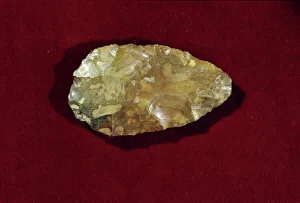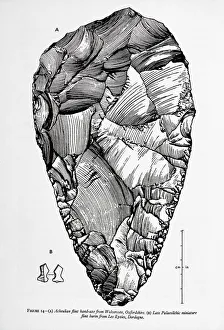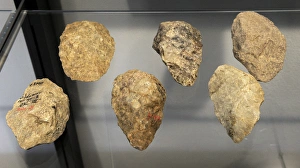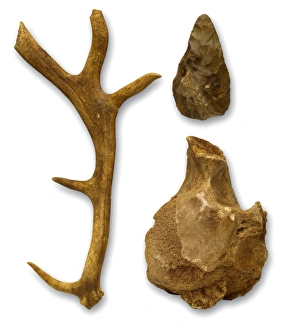Acheulian Collection
The Acheulian culture, dating back to 5-2 million years ago
All Professionally Made to Order for Quick Shipping
The Acheulian culture, dating back to 5-2 million years ago, left behind a fascinating array of artifacts that provide us with valuable insights into our prehistoric past. Among these relics are the iconic hand axes, which were essential tools for early humans. One such artifact is the Prehistoric Acheulian hand axe discovered in St. Germain en Laye and believed to be from around 600, 000 BC. This beautifully crafted flint tool showcases the remarkable skills possessed by our ancient ancestors. Another notable find is the Acheulian flint hand-axe unearthed in Wolvercote, Oxfordshire. Its intricate design and sharp edges demonstrate the advanced craftsmanship of Homo erectus during this period. These hand axes were not only practical tools but also cultural symbols within the Acheulian society. They played a crucial role in hunting, woodworking, and shaping other materials necessary for survival. In addition to these artifacts, significant fossil discoveries have shed light on the hominins who used them. The Swanscombe craniums belonging to Homo neanderthalensis offer glimpses into their physical appearance and evolution over time. Furthermore, antlers, bones, and another hand axe found at Swanscombe provide evidence of Hoxnian fauna alongside human activity during this era, and is intriguing to consider how these ancient beings utilized such tools as they navigated their environment thousands of years ago. The Acheulean culture represents an important milestone in human history when our ancestors began developing more sophisticated technologies that would shape future civilizations. As we study these remnants from our distant past—whether it's examining a Paleolithic hand-axe or marveling at The Furze Platt Hand Axe—we gain a deeper understanding of humanity's journey through time and appreciate the ingenuity displayed by those who came before us.














